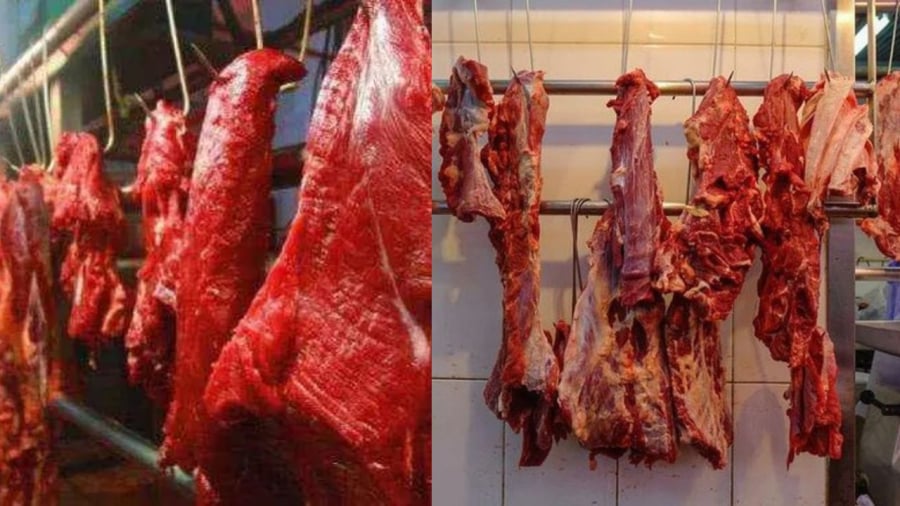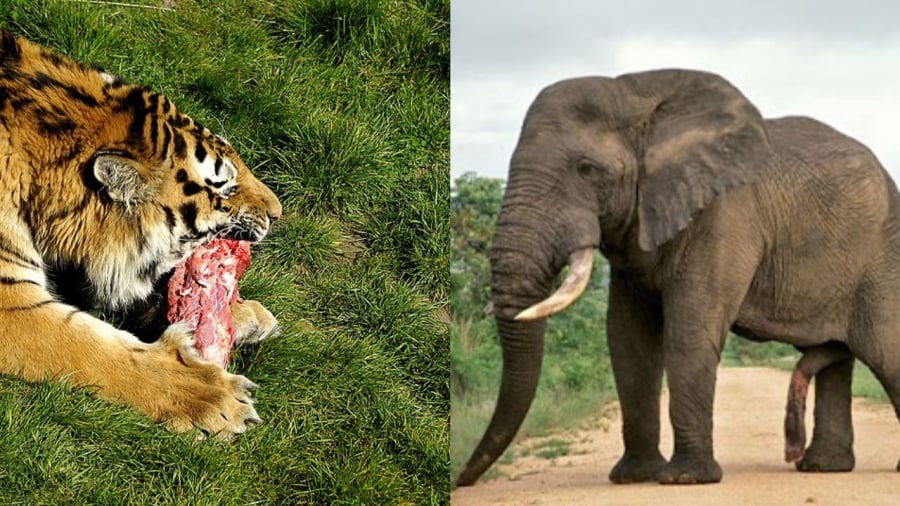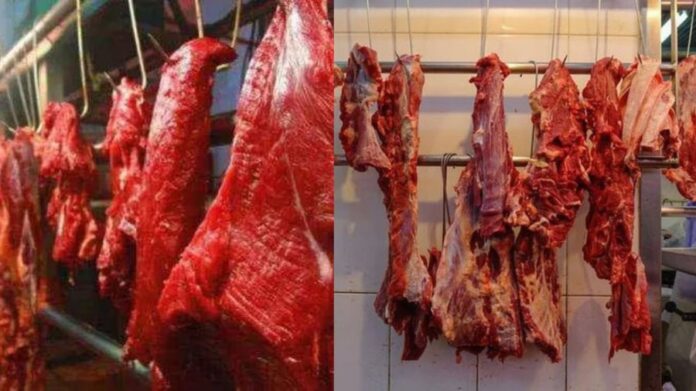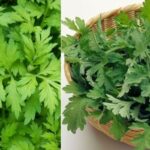Meat plays a significant role in the human diet, offering a range of essential nutrients. Interestingly, humans have historically favored the meat of herbivorous animals, rarely consuming that of carnivores. This preference is not merely a coincidence but a reflection of our adaptation, evolution, and rational exploitation of natural resources for survival.
From Foraging to Carnivory – A Human Evolutionary Step
In the early stages, our ancestors primarily relied on hunting and gathering for sustenance. As the African climate became drier, vast grasslands replaced lush forests, forcing humans to descend from the trees and seek food on the ground.

The emergence of Australopithecus marked a pivotal moment in our evolutionary history, as our ancestors began to incorporate meat into their diet. However, the first meat consumed by humans was not derived from formidable predatory animals but rather from insects, lizards, small birds, and easily catchable herbivores.
During this period, Africa was home to powerful carnivorous creatures such as saber-toothed tigers, cave lions, short-faced bears, and ancient wolves. These predators posed a significant challenge for early humans, making them difficult to hunt and approach.
Herbivores: Easier to Hunt and Domesticate
As tools and technology evolved, humans were able to hunt larger animals, but they still faced considerable challenges when confronting fierce carnivores. In contrast, herbivores like deer, antelope, and cattle exhibited docile behavior, offered less resistance, and were easier to hunt and domesticate.
Over generations, this trend solidified into a habit, with humans focusing their hunting and farming efforts on herbivorous animals. This practice was firmly established and reinforced throughout human history.

Abundant and Stable Food Source
One crucial reason for humans’ preference for herbivorous animals as a primary food source is their significantly larger population compared to carnivores. According to ecological principles, the number of herbivores always exceeds that of carnivores in any ecosystem. This ensures a stable and long-term food supply to meet the growing human population’s demands.
Additionally, herbivorous animals like cattle, sheep, goats, and pigs reproduce rapidly and are suitable for large-scale farming to meet community consumption needs.
Health Benefits of Herbivore Meat
Meat derived from herbivores tends to be more nutritious, easily digestible, and contains fewer toxic compounds and harmful acidic substances than carnivore meat. Top predators in the food chain, such as tigers, bears, and crocodiles, accumulate toxins in their bodies through the process of digesting and absorbing the meat of their prey.
Biological studies indicate that carnivore meat often has a sour and putrid odor and contains compounds that can be detrimental to the liver and kidneys. Prolonged consumption may lead to the accumulation of toxins, resulting in damage to internal organs and the digestive system. Even the meat of certain birds of prey, like eagles, can be unpleasant and toxic.
Safety and Rationality in Resource Utilization
Choosing herbivorous animals as a food source is not only a nutritional decision but also a survival strategy. Carnivorous animals tend to be aggressive and dangerous, posing a potential threat to humans during hunting or domestication attempts. In contrast, herbivores are generally docile, easily controlled, and less likely to cause harm.
Furthermore, the domestication of animals like cattle, buffalo, pigs, and horses not only provides a food source but also offers labor for transportation and produces dairy, leather, and wool.
The human preference for herbivorous meat is not a random choice but the outcome of evolution, adaptation, and rational resource utilization to ensure survival and sustainable development. With nutritional, health, and safety benefits, along with a stable supply, herbivorous animals remain the ideal food source for humans—from the past to the present and potentially into the future.
The Magic Bean: Unlocking the Power of Soy
In a world brimming with an array of nuts and beans, it’s remarkable that soy beans stand out as the golden child of the bunch. Their nutritional value and positive impact on human health are unparalleled. But that’s not all; these tiny beans are also the perfect companions for families on their journey towards a healthier and more balanced lifestyle.
Herbs and Their Hidden Meanings: Planting the Art of Ancient Wisdom.
Purslane, also known as Portulaca oleracea, is a succulent plant with a global reach and a plethora of benefits. This humble herb boasts a long history of culinary and medicinal use, especially in Asian cultures. Beyond its edible and healing properties, purslane also holds a special place in feng shui practices, believed to bring good fortune and positive energy to those who grow it.








































